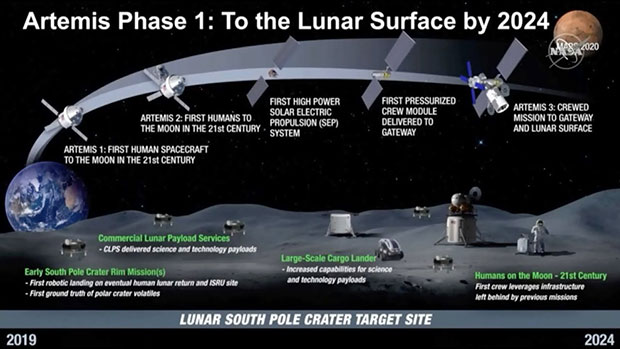[ad_1]
On July 20, 1969, astronaut Neil Armstrong uttered the now famous line, “That’s one small step for [a] man, one giant leap for mankind,” when he became the first person to set foot on the moon.
It fulfilled the almost as famous “We choose to go to the moon” line delivered by President John F. Kennedy to a crowd at Rice Stadium in Houston, Texas, on Sept. 12, 1962. In that speech the president declared that the United States wouldsend and return a man to the moon by the end of the decade, which hestressed would be no small undertaking.
“We choose to go to the moon in this decade and do the other things,not because they are easy, but because they are hard; because thatgoal will serve to organize and measure the best of our energies andskills, because that challenge is one that we are willing to accept,one we are unwilling to postpone, and one we intend to win, and theothers, too,” Kennedy said in the speech.
The landing on the moon was a major victory for the U.S. inthe space race. The Soviet Union had been the first to launch asatellite into space. Less than a year and a half before Kennedy’sspeech, on April 12, 1961, Soviet cosmonaut Yuri Alekseyevich Gagarinbecame the first human to travel into space.
President Kennedy was assassinated a little more than a year after the moonspeech, but its achievement is regarded as an enduring legacy of his commitment.
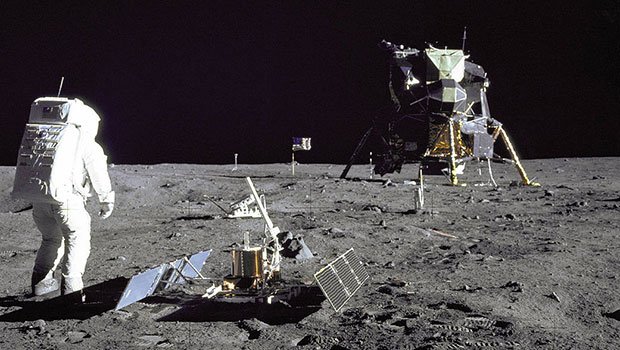
Astronaut and Lunar Module pilot Buzz Aldrin is pictured during the Apollo 11 extravehicular activity on the moon.
The Cost of Sending a Man to the Moon
Even today, 50 years later, the cost of the Apollo Program — whichincluded six successful moon landings, two orbitingmissions, and one mission that suffered a major malfunction — has beenthe subject of debate. From the program’s beginnings in the early1960s to its end in 1972 it had a price tag of US$25.4 billion,according to a report to Congress in 1973.
A total of 12 men walked on the surface of moon, but the ApolloProgram didn’t usher in an era of lunar exploration, and since Apollo17 in 1972, there have been no further missions to the moon.
Yet the moon landing was notable in that it brought out the best inAmerican industry. In addition to NASA’s 33,200 federal employees, another 377,000 government contractors played a part in sending a man to the moon.
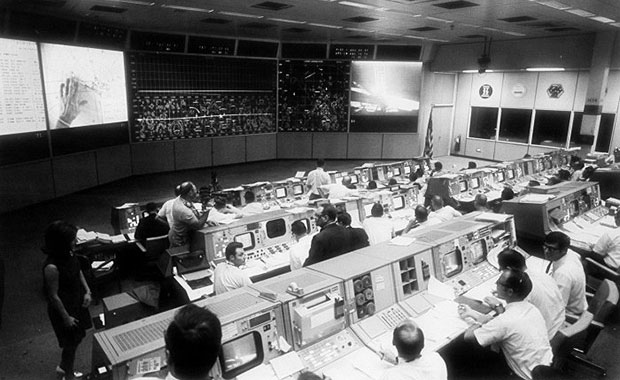
Mission Control During Lunar Surface Apollo 11 EVA
It may have been a small step for a single man, but it took a smallarmy of individuals to ensure the giant leap was able to occur.
A True Team Effort
The Apollo Mission’s success was due to the fact that it truly had thebacking of the American government and the support of virtually the entireAmerican aerospace community. It produced lasting results thatare still evident today.
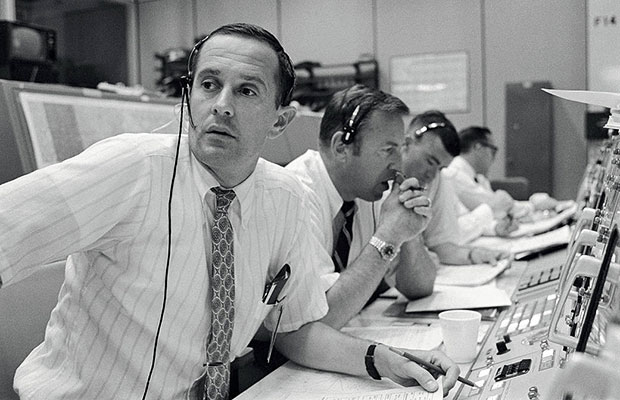
Astronauts Charles Duke, James Lovell and Fred Haise
“It took a lot of money and involved a huge support team to do that,but it also inspired a whole generation of kids — including me — to gointo the science, technical, engineering and mathematical (STEM)fields,” observed astrophysicist Nadine G. Barlow, associate director of the Arizona Space Grant Consortium.
“It was not just the achievement of the astronauts, but of a hugenumber of support personnel — from the engineers who designed therockets, to the mathematicians who calculated the correct orbits, to thescientists who trained the astronauts on how to select the rock andsoil samples to bring back for study, to the thousands of everydaypeople who helped run facilities that trained, fed and provided aplace to sleep for the astronauts and everyone else,” she toldTechNewsWorld.
It was a huge undertaking that required thecommitment of many people from different walks of life.
“Neil Armstrong’s first step on the moon on July 20, 1969, also causedthe whole world to come together and look in awe at what humans hadaccomplished,” added Barlow.
From the First Flight
The other remarkable aspect of the 50th anniversary of the Apollo 11mission is that it occurred only 66 years after the Wright Brothers’first flight of just 12 seconds in December 1903. From the shortflight on a beach in Kitty Hawk, North Carolina, to a man landing onthe moon had occurred in the time of an average lifespan.
It is often noted that the computers used to send a man to the moonhave less computing power than modern smartphones, but thetechnological leap forward from the first plane — which was littlemore than a motorized kite — was even more significant.
“At the time the space craft were very high tech, but the same wastrue of the aircraft back in 1903,” said planetary scientist Jim Bell, a professor in the School of Earth and Space Exploration at Arizona State University.
“Of course compared to a modern airplane, the Wright Brothers’ plane wasa toy — and when you compare a spacecraft of the 1960s to one today, you seethe advancement. That will be true 50 years from now as well,” he told TechNewsWorld.
It is also noteworthy not only that just 66 years elapsed from the first flight to the first mission to the moon, but also that the first manned spaceflight and the moon mission occurred within a single decade!
“The Apollo missions to the moon were an amazing technical achievementin a short period of time — less than 10 years from when Alan Shepardwent into space in 1961 to Neil Armstrong taking that first step onthe moon in 1969,” said Barlow.
High Tech from the Swinging 60s
The technology that was used to send a man to the moon might have beenless powerful than our current phones, but that is why so many systemswere required.
“Given that computers were still in their infancy during Apollo it isamazing that it was as successful as it was,” said David Kring, senior staff scientist atthe Universities Space Research Association’s Lunar and Planetary Institute.
It was “extremely important they used a quad redundant computingsystem for reliability,” noted LaNetra Tate, a programexecutive in the Space Technology Mission Directorate at NASA Headquarters.
“Human exploration systems continue to use redundant architectures forsimilar reasons,” she told TechNewsWorld.
This redundancy included computers that had a specific role,primarily the navigation systems, added ASU’s Bell.
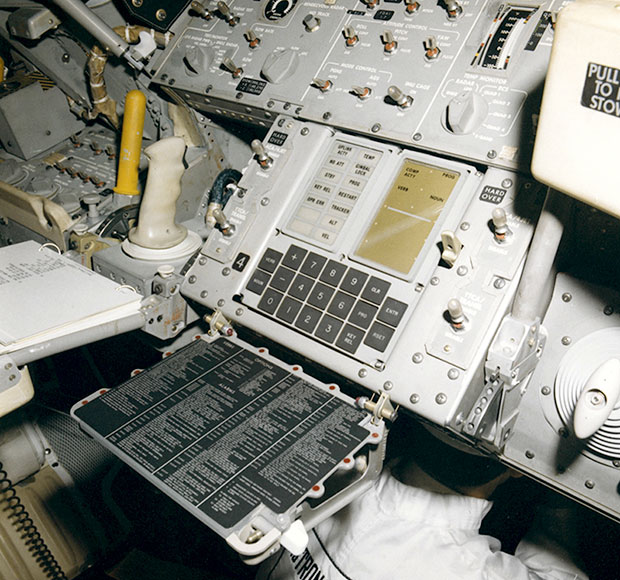
The Apollo Guidance Computer was installed on board each Apollo command module and Apollo Lunar Module.
– click image to enlarge –
“Many tasks were manually controlled during the Apollo missions from1969 to 1972,” he pointed out. Even those that are automated today still require monitoring.
Back to the Moon
NASA earlier this year announced plans to send astronauts back to the moon by 2024 as part of the Artemis Program. Given the major technological leap in computing, as well as advances in propulsion systems and materials, such as carbon fiber, traveling to the moon and back might be less daunting.
“Today, we have enough computing horsepower to detect — and avoid — landing hazards in real-time,” noted NASA’s Tate. “Overall, today’s computing systems will make it easier and safer to get people from Earth to the moon.”
There also have been great strides in the capabilities and complexity ofrobotic systems. Still, high-performance spaceflight computing remainskey to advancing autonomous human landing systems, she noted.
“In the near term — for example, NASA’s Artemis program — it will likelybe a combination of humans and computers that land a craft on themoon’s south pole,” said Tate.
Progress in other areas also will make a difference.
“High-performance spaceflight computing, or HPSC, provides thecomputing throughput at an affordable size, weight, power and costrequired to enable the real-time, highly reliable processing neededfor intelligent robotics and autonomous operation of spacecraft andassociated platforms,” explained Tate. “The ability to augment the humancomponent of missions makes space travel safer in the same way thatdoing so on aircraft, and soon in automobiles, has made terrestrialtravel safer.”
Much More to Explore
The choice of names for NASA’s next moon program is important — but itmight be lost on those who aren’t familiar with Greek mythology. Artemis, thedaughter of Zeus and Leto, was the twin sister of Apollo, but she wasalso the goddess of hunting and the wilderness.
That is an important distinction, because Artemis is not meant to be a replay of the Apollo program.
“Exploration of space is a challenging endeavor, and it is sometimeslost on people how much of the moon hasn’t been explored,” the Lunar andPlanetary Institute’s Kring told TechNewsWorld.
The Apollo missions are comparable to Christopher Columbus’ first voyage to theNew World, when viewed in the context of what followed.
“We have touched the lunar surface, but we still have to takeadvantage of what this presents, much like how Lewis and Clark providedan opening to a new land,” said Kring.
Today’s technology is more advanced than what was available in1969 to 1972, and the moon program promises to be much bigger.
“We can expect larger crews, longer stays that will involve bringingequipment to ‘live off the land,’ and that could include processingthe polar ice,” said Bell.
“To be honest, I wouldn’t want astronauts to go back just to plant aflag, collect some rocks and dirt and come home,” he added.
“It was complex at the time, but we do that stuff with robots, so Ipersonally want to see a real exploration mission that requires humaningenuity, and that does things that are worthy of human exploration.We need to push the frontier beyond where it was 50 years ago.”
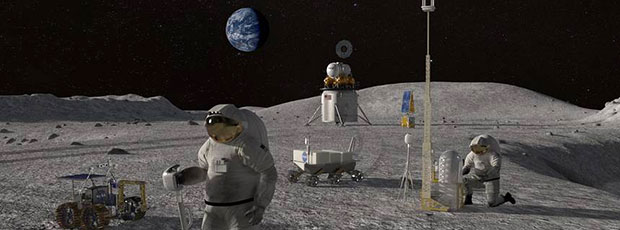
NASA Artemis Program Human Landing System
Opening the Final Frontier
The Artemis Program could be the start of a new era of spaceexploration, and this time the moon isn’t the goal, but just the nextstep that gets mankind in position for the next giant leap.
“We are moving more slowly now as we make plans to return to the moonand go on to Mars,” said the Arizona Space Grant Consortium’s Barlow.
“It is human nature to explore, and is unlikely that we will be satisfied remaining behind on Earth now that we have the capability to travel to space,” she added.
“We no longer are interested in sending astronauts to the moon for afew hours at a time — we now are talking about establishing coloniesfor a long-term presence to better explore the moon and develop itsresources,” Barlow explained.
Whereas Apollo demonstrated that we could get humans to the moon for avery short stay, the next step will be work out what it takes toestablish and maintain a longer-term presence for humans in space.
“That again will take the commitment of a large number of people tohelp make it happen, but it will inspire a new generation of studentsto tackle these challenges by developing new technologies and makingnew discoveries that will benefit all of humankind,” Barlow said.
The words of President Kennedy — to do not what is easy — may again resonate.
“It is in our nature to do the things that are hard,” said Kring.”Landing at the lunar south pole and developing a sustainable programis going to be hard — but it will be worth the effort.”
[ad_2]
Source link

